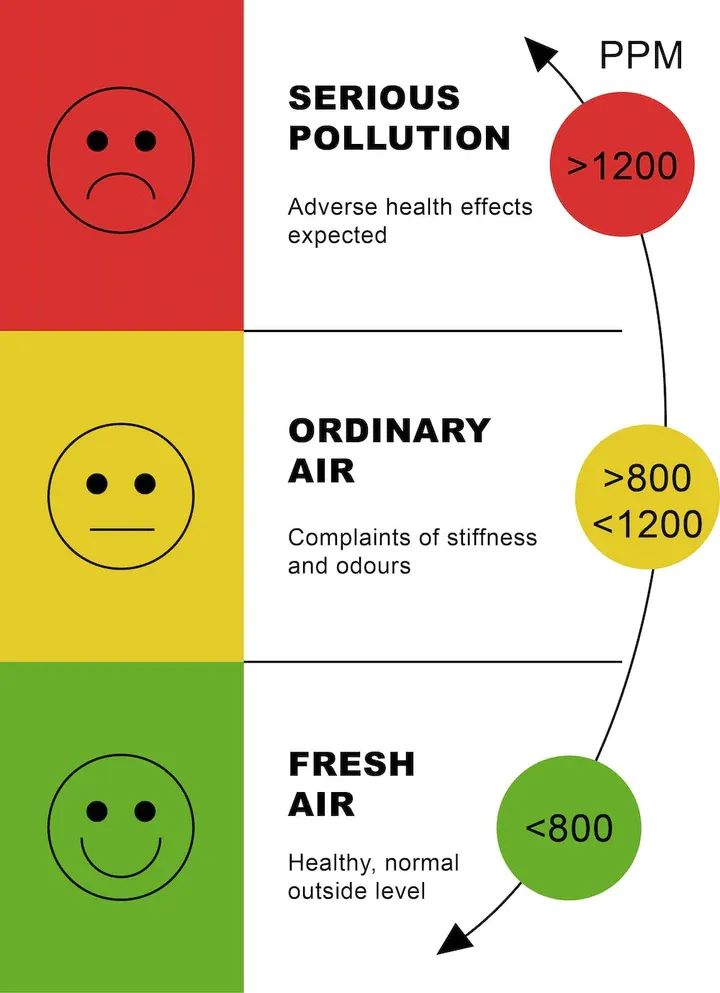Schools, Colleges & Universities
Optimal learning environments to support education
Educational success depends on how "healthy" the physical environment is in which learning takes place. Health protection, improved comfort and increased efficiency in educational facilities is of great importance.
The young spend a large amount of time in school as they grow up. Air pollution inside is a problem that is continuing to grow – especially where the internal air can be 5 times worse than externally and we all know of the external issues? Though we all have a basic understanding that bad air can contribute to issues such as allergies and asthma, it is important to remember that bad air quality can also impact mood, energy levels, and productivity.
Children are more vulnerable to air pollution
A recently commissioned report by the London Mayor noted that children are far more vulnerable to pollution in the air than adults. This is due to their airways being smaller, but children also breathe more air per kilo of their body weight. The continued exposure of a child’s lungs to pollution can potentially lead to cardiovascular and respiratory diseases.
The report’s results illustrated that the inside temperature and poor ventilation can also affect their performance in school. Worryingly, there is a link between the beginning of the school year and admissions to hospitals for young asthma sufferers. This indicates that children with asthma may find their ailment triggered by poor air quality within their school.
Among the report’s recommendations were:
- Move entrances and playing areas away from a busy road.
- Reduce the emissions from kitchens, boilers and other areas.
- Add a green infrastructure, such as a barrier bush, along busy roads and in play areas.
- Encourage students to cycle and walk to school along less polluted routes.
The effect of older buildings on air pollution
The building age is an additional issue. Those that have airtight and modern construction generally still have issues but generally record a lower amount of pollution than buildings from the Victorian era. Unfortunately, a large number of these are home to schools.
It also reported that in addition to the above, using an air purification system (especially UVC) to clean the air is a fantastic way to improve its quality. This is particularly the case for schools in inner-city areas which have the added challenge of vehicle exhaust pollution due to their location.
Air Quality Improvements Improves Classroom Productivity
Schools we have worked with have seen an increase of up to 36% of classroom work improve, since we have provided solutions, the increase has come from afternoon sessions being the most productive with pupils feeling less tired due to improved air quality, improved air quality has also seen less viruses, allergies, asthma, headaches, hay fever and improved pupils behaviour.
More importantly, the quality of air within the teaching environment is not only allowing for more attentive learning it is a major benefit to the longer-term health of both the teacher and students. It is giving the best opportunity for our futures.
Clean air may be a basic human right, but unfortunately, it’s not a reality for many school children – putting them at greater risk of exposure to airborne illnesses and pollutants. Viruses in general will always be with us and have always had a major impact on school attendance. While we can’t eliminate germs, we can curb their spread in schools by addressing indoor air quality.
This doesn't just stop with viruses. There are other factors in the air at our schools we should be focusing on, such as; PM1, PM2.5, PM10, VOC's, Formaldehyde, Ozone, humidity's, and other dangerous airborne pollutants. PM2.5 can actually cause more severe and frequent symptoms of conditions such as asthma, COPD, and seasonal allergies.
It's also the case that children with allergies are greatly disrupted during lessons, especially when requiring the additional concentration levels during important exam times – this has a major impact on their learning.
Every day we take up to 23,040 breaths. In an office environment where we are in close proximity to each other, high concentrations of CO2 can build up if the air is not ventilated properly – as well as a high humidity.
Too high humidity can cause mould growth, too low, (as research shows) has been linked to the spread of virus. Researchers for the Centre for Disease Control and Prevention found that when humidity levels were at 23%, 70 to 77% of flu virus particles were still able to cause an infection an hour after coughing – the ideal humidity rate is between 30 – 60% for a healthy indoor environment.
Affects of poor air quality on children's health
Poor air quality stunts the growth of children's lungs and worsens chronic illnesses such as asthma, lung & heart disease
New analysis has found 3.1 millionchildren in England are attending schools in areas exceeding World Health Organisation limits for PM2.5
Facts About Air Pollution
Air pollution is one of the UK's biggest killers
The Smallest particles are the most dangerous.
Worldwide, millions of premature deaths are linked to air pollution.
Children and the elderly are the most vulnerable to air pollution
A child born today may not breathe clean air until they are 8
Air Pollution causes 36,000 premature deaths in the UK each year
It is estimated that 9,000 premature deaths are caused by air pollution in London each year
London’s air is some of the dirtiest in Europe.
the High Court have ordered the Government to come up with a plan to clean up air across the UK
In 2017 the the annual pollution limits in London were breached in 5 days
Air quality inside buildings is normally 5 times worse that outside
Air pollution costs the UK £20Bn per year
We Specialise in Air Quality Assessments
Air quality testing is important to help ensure your buildings safety and compliance to the latest legal requirements.
Solutions at Ultra Protect
Under the current Health & Safety at Work etc. Act 1974 and the Occupiers Liability Act 1984, an employer has a duty of care to ensure that a safe and healthy environment is provided. The Approved Code of Practice accompanying the Workplace (Health, Safety and Welfare) Regulations, states that indoor air quality should be at least equal to, but ideally better than, the air outside your building and that all commercial premises must have an Air Quality Management system in place. To achieve this then an Air Quality Assessment would need to be completed.
The Internal Air Quality Assessment is a great place to start as the completed report will give you a ‘state of play’ of your premises Internal Air Quality.
If you know what your issues are then you can implement the correct changes based on performance and budgets.
Its like a Risk Assessment, it will clearly indicate the sites Air Quality Issues and Causes and then provide you with an action plan based on risk factor – short, medium and long-term.
This will enable immediate improvements which will give a positive impact with your: -
- Improved Internal air to breath.
- Allergen reduction in both Air and on the Surface.
- Reduced pupil & staff sick days.
- Reduced virus transmission.
- Attentive students and staff.
- A healthier and more enjoyable place to be.
Please do note that the issues of Air Quality and Surface sanitisation go hand in hand in the fight against virus and dust control – two major concerns for our health and well-being.
There are automatic solutions available for both that are 99.999% effective with out the need to be regularly altered or re-applied.
Book Your Air Quality Assessment
We have the expertise and products to provide solutions for a cleaner, fresher and healthier environment for us to work in.










